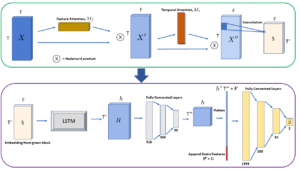Forecasting Postoperative Kidney Failure
 Acute kidney injury (AKI) is one of the most frequent post-surgicalcardiac surgery complications, with estimates ranging from 20-50% depending on the procedure. AKI is a serious morbidity associated with longer hospital stays, increased mortality, and greater risk of developing long-term chronic kidney injury. Hence, there is a clear need for perioperative physicians to understand the baseline and ongoing risk for AKI. Such information could help guide multiple aspects of the surgical planning, monitoring, and execution.
Acute kidney injury (AKI) is one of the most frequent post-surgicalcardiac surgery complications, with estimates ranging from 20-50% depending on the procedure. AKI is a serious morbidity associated with longer hospital stays, increased mortality, and greater risk of developing long-term chronic kidney injury. Hence, there is a clear need for perioperative physicians to understand the baseline and ongoing risk for AKI. Such information could help guide multiple aspects of the surgical planning, monitoring, and execution.
This proposal will develop automated methods to continuously forecast the risk for AKI based on preoperative clinical history and real-time intraoperative physiological data. To this end, we have formulated a novel deep learning architecture for AKI prediction and evaluated it on a large clinical dataset of >3,000 surgical patients.
Selected Publications
- Y. Peng, N.S. D’Souza, B. Bush, C. Brown, A. Venkataraman. Predicting Acute Kidney Injury via Interpretable Ensemble Learning and Attention Weighted Convoutional–Recurrent Neural Networks. In Proc. Conference on Information Sciences and Systems (CISS), pp. 1-6, 2021.
- R. Nandkarni. Examination of the Association Between Arterial Blood Pressure Below the Lower Limit of Autoregulation and Acute Kidney Injury After Cardiac Surgery. MSE Thesis. Johns Hopkins University, Baltimore MD, 2019.
Funding
- Malone Center Seed Grant (Joint PI: Venkataraman/Bush/Brown)
A Deep Learning Approach to Continuously Forecast Postoperative Kidney Failure During Cardiac Surgery
Project Dates: 01/01/20 – 12/31/21
Total Funding Amount: $50,000
Network Modeling of Enteric Nervous System
 The Enteric Nervous System (ENS) is a collection of neurons and glial cells that reside within the wall of the gastrointestinal tract, which regulates intestinal motility. Structural aberrations are associated with intestinal dysmotility in acute and chronic gut diseases, and in myriad metabolic and neuro-degenerative disorders. Hence, our goal is to leverage tools in computer vision and machine learning to model the network structure and organization of the ENS.
The Enteric Nervous System (ENS) is a collection of neurons and glial cells that reside within the wall of the gastrointestinal tract, which regulates intestinal motility. Structural aberrations are associated with intestinal dysmotility in acute and chronic gut diseases, and in myriad metabolic and neuro-degenerative disorders. Hence, our goal is to leverage tools in computer vision and machine learning to model the network structure and organization of the ENS.
Our approach combines the use of unsupervised algorithms and supervised, deep learning algorithms for segmenting composite images of immuno-stained tissue. Current work focuses on creating an image processing pipeline for neuron clustering and enumeration, and network extraction to form a connectome.
Selected Publications
- Y. Kobayashi*, A. Bukowski*, S. Das*, N. Wagle, S. Bakshi, M. Saha, J. Kaltschmidt+, A. Venkataraman+, S. Kulkarni+. A Statistical Map of the Adult Murine Ilieal Enteric Nervous System using an AI-Driven COUNTEN Algorithm. eNeuro, In Press, 2021.
* Joint first authorship +Joint senior authorship
Funding
- GI Core Pilot Grant Program (PI: Venkataraman)
AI for Neuro-GI: Developing an AI-Driven Software to Construct and Analyze the First Large-Scale Network Map of the Enteric Nervous System
Project Dates: 04/01/21 – 03/31/22
Total Funding Amount: $15,000

